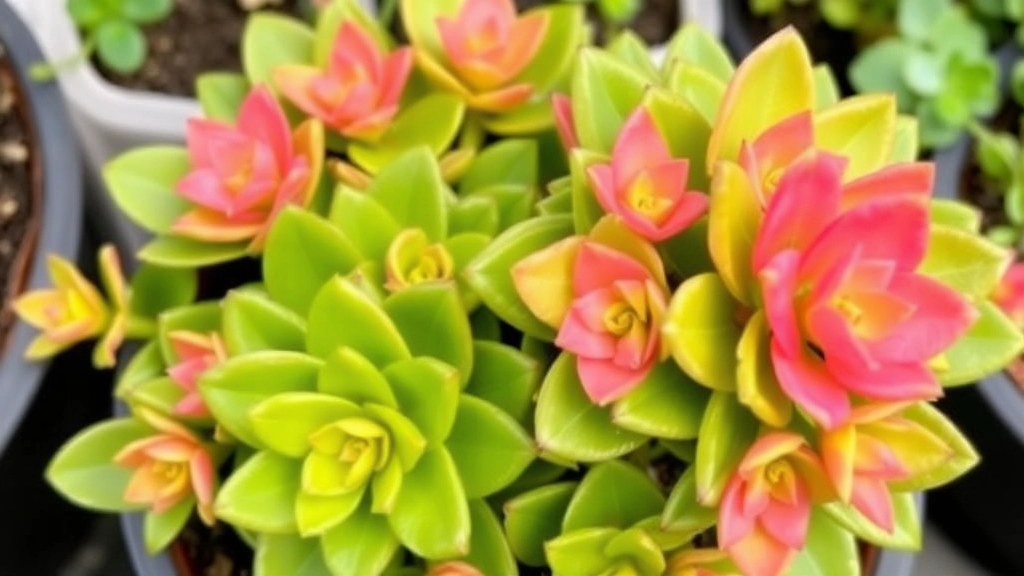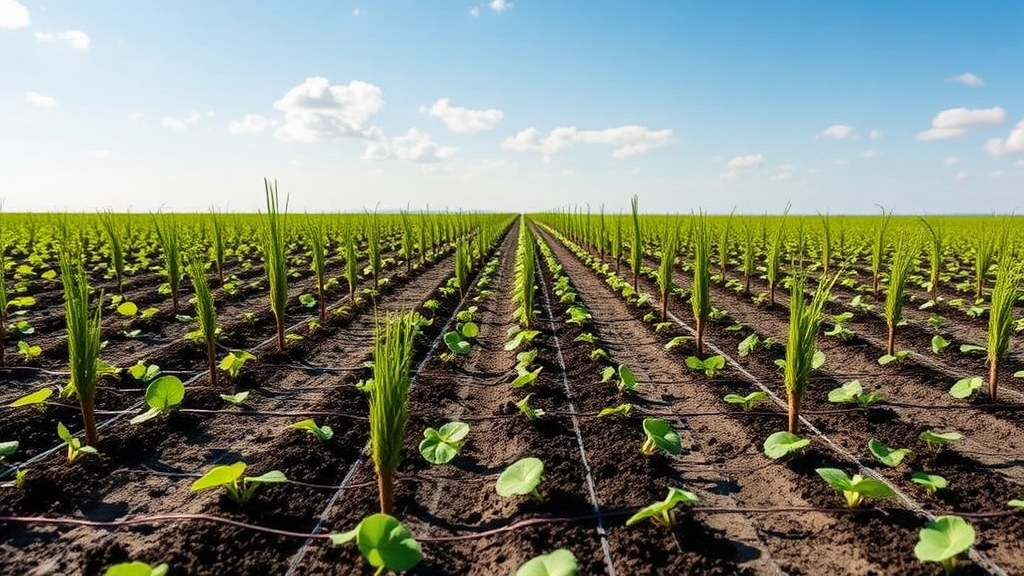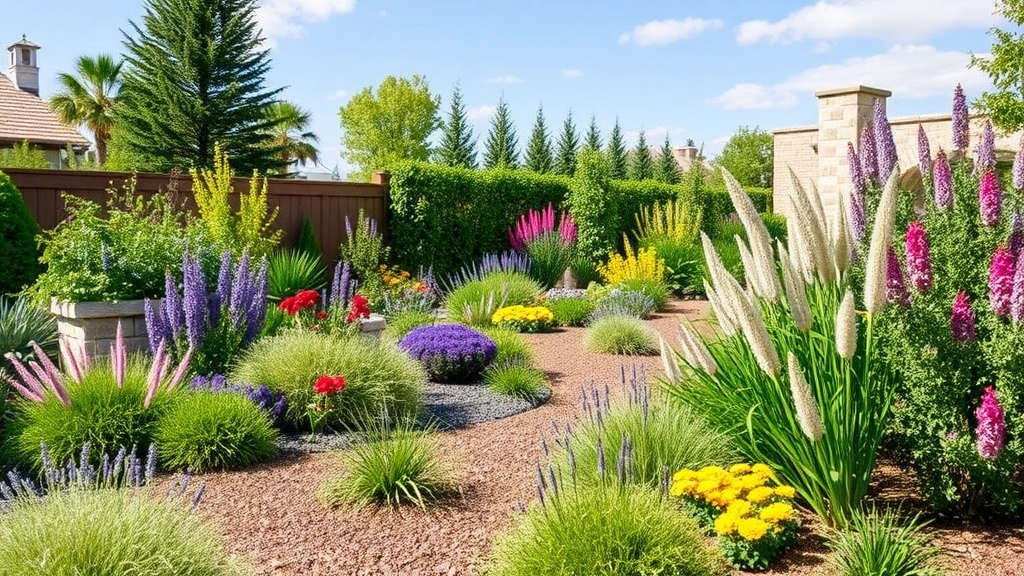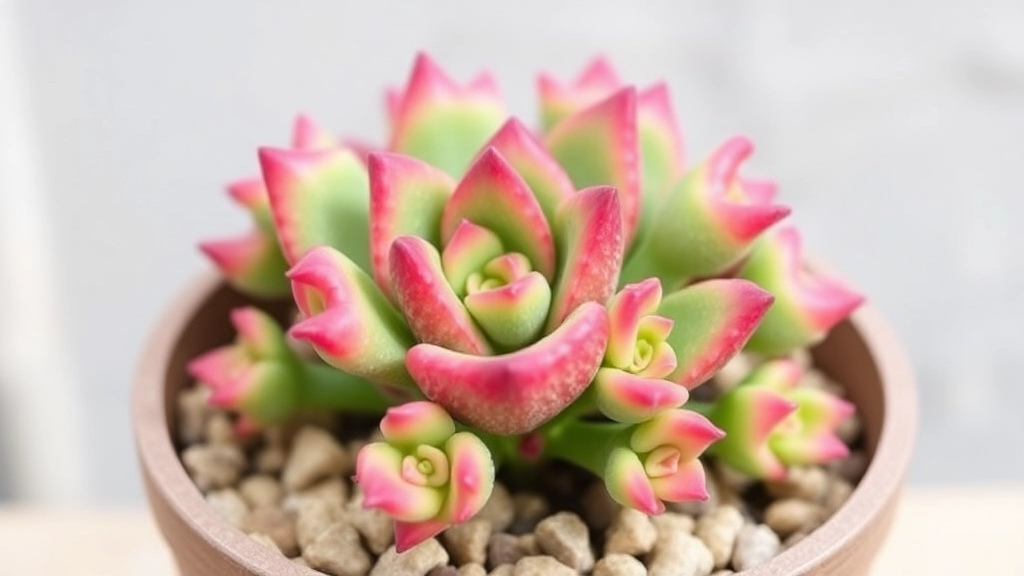Kalanchoe Synsepala Gremlin
If you’re on the lookout for a unique and low-maintenance succulent, the Kalanchoe Synsepala Gremlin might just be your perfect match. This eye-catching plant, often referred to as the “Walking Kalanchoe,” features fleshy, lime-green leaves with striking burgundy edges. What sets it apart are its stolons—long stems that produce baby plantlets, making propagation a breeze as these mini plants root themselves away from the main plant.
The Kalanchoe Synsepala Gremlin thrives in bright light with some partial shade, making it versatile for both indoor and outdoor settings. It prefers well-draining soil and minimal watering, making it an excellent choice for those seeking a drought-tolerant plant. Whether you’re looking to add a splash of color and texture to your garden, rockery, or hanging basket, this succulent also delights with its dark red winter flowers.
When exploring the world of Kalanchoe, one may wonder what sets *Kalanchoe synsepala ‘Gremlin’* apart from its relatives.
This striking succulent boasts several unique features that make it an appealing choice for both novice and experienced gardeners alike.
## Distinctive Characteristics
– **Foliage**: The ‘Gremlin’ variety is known for its vibrant, fleshy leaves that display a charming mix of green and reddish hues. The leaves are often serrated, adding an interesting texture to its overall appearance.
– **Size**: Typically, this plant remains compact, reaching heights of about 30 cm (12 inches), making it perfect for smaller spaces or as a tabletop plant.
– **Growth Habit**: With a bushy growth habit, ‘Gremlin’ can fill out a pot beautifully, offering a lush look without taking up too much room.
– **Flowers**: One of its most captivating features is the clusters of small, tubular flowers that bloom in vibrant shades of orange and red, attracting pollinators and adding a splash of colour to any garden.
## Resilience
Kalanchoe ‘Gremlin’ is also celebrated for its resilience.
– **Drought Tolerance**: As a succulent, it thrives in dry conditions, making it an excellent choice for low-maintenance gardens.
– **Pest Resistance**: This variety is generally resistant to common pests, which means less hassle for you.
For more detailed care information, you might find the [complete care guide for Kalanchoe synsepala](https://planthq.org/complete-care-guide-for-kalanchoe-synsepala-baker/) helpful. Additionally, if you’re interested in exploring other Kalanchoe varieties, check out the [top Kalanchoe succulent varieties and care tips](https://planthq.org/top-kalanchoe-succulent-varieties-and-care-tips/).
Ideal Growing Conditions for Kalanchoe Synsepala ‘Gremlin’

So, you’ve decided to bring a bit of Kalanchoe magic into your life with ‘Gremlin’. Great choice! But what does this little beauty need to thrive?
Light Requirements
First off, ‘Gremlin’ loves the sun.
- Bright, indirect light is perfect.
- A south or west-facing window works wonders.
Too much direct sunlight can scorch those lovely leaves, so keep an eye on it!
Temperature Preferences
Next, let’s chat about temperature.
- Ideal range: 20-25°C (68-77°F) during the day.
- At night, it can drop to around 10-15°C (50-59°F).
Avoid chilly drafts or sudden temperature changes—’Gremlin’ is not a fan!
Humidity Levels
Now, humidity.
- This plant prefers low to moderate humidity.
- It’s perfect for your average home environment.
If you live in a humid area, just ensure good air circulation around your plant.
Fertilisation Needs
When it comes to feeding, keep it simple.
- Use a balanced, diluted fertiliser during the growing season (spring and summer).
- Once a month is usually enough.
Just don’t overdo it; too much food can lead to leggy growth.
Watering and Soil Requirements
When it comes to caring for Kalanchoe Synsepala ‘Gremlin’, understanding its watering and soil needs is essential. Many gardeners worry about overwatering, which can lead to root rot.
Propagation via Stolons

When it comes to expanding your collection of Kalanchoe Synsepala ‘Gremlin’, propagation via stolons is a fantastic method.
What Are Stolons?
Stolons are horizontal stems that grow along the soil surface, producing new plants at the nodes. This natural growth habit makes ‘Gremlin’ particularly easy to propagate.
Steps for Propagation:
- Identify Healthy Stolons: Look for healthy, green stolons that have developed small plantlets at their tips.
- Sever the Stolons: Using clean, sharp scissors, cut the stolons from the parent plant, ensuring each segment has a small plantlet attached.
- Prepare the Soil: Use a well-draining potting mix to prevent root rot. A cactus or succulent mix works well.
- Plant the Stolons: Place the cut end of each stolon into the soil, ensuring the plantlet is above the soil line.
- Water Sparingly: Lightly moisten the soil after planting. Avoid overwatering as this can lead to rot.
- Provide Light: Position the pots in a location with bright, indirect sunlight to encourage growth.
- Monitor Growth: Keep an eye on the new plants. Once they establish roots, you can treat them like mature ‘Gremlin’ plants.
This method not only allows you to create more plants but also helps maintain the health of your original ‘Gremlin’.
Seasonal Flowering and Care Tips for Kalanchoe Synsepala ‘Gremlin’
As we delve into the seasonal flowering and care tips for Kalanchoe Synsepala ‘Gremlin’, it’s important to understand how to keep this charming plant thriving throughout the year.
Flowering Season
Kalanchoe ‘Gremlin’ typically blooms in late winter to early spring. During this time, you can expect vibrant clusters of flowers that add a splash of colour to your indoor or outdoor spaces.
Care Tips During Flowering
To ensure your ‘Gremlin’ produces the best flowers, consider the following:
- Light: Provide bright, indirect sunlight. Too much direct sun can scorch the leaves, while too little can hinder flowering.
- Temperature: Maintain a warm environment. Ideal temperatures are between 18°C to 24°C (65°F to 75°F). Avoid cold drafts.
- Fertilisation: Use a balanced, water-soluble fertiliser every 4-6 weeks during the growing season to encourage blooming.
- Pruning: After flowering, prune back spent blooms and any leggy growth. This encourages a fuller plant and prepares it for the next blooming cycle.
Post-Bloom Care
Once the flowering period is over, it’s crucial to adjust your care routine:
- Watering: Reduce watering slightly as the plant enters a dormant phase. Ensure the soil dries out between waterings.
- Light: Continue to provide ample light, but be cautious of harsh afternoon sun.
- Rest Period: Allow your ‘Gremlin’ a rest period of about 6-8 weeks before resuming regular care, including fertilisation.
For more detailed care tips on similar plants, you might find our complete guide on caring for Panda Plant helpful. Additionally, if you’re interested in exploring more about Kalanchoe varieties, our Kalanchoe Blossfeldiana care guide offers extensive insights.
Indoor vs Outdoor Growing Options for Kalanchoe Synsepala ‘Gremlin’

So, you’re wondering whether to keep your Kalanchoe ‘Gremlin’ inside or let it bask in the great outdoors?
Both options have their perks, but it really comes down to your living situation and personal preferences.
Indoor Growing
Growing ‘Gremlin’ indoors can be super rewarding. Here’s why:
- Controlled Environment: You can manage temperature and humidity easily.
- Pest Management: Fewer pests to worry about compared to outside.
- Decorative Touch: Adds a splash of green to your home décor.
Key Tips for Indoor Growth:
- Light: Place it near a window with bright, indirect sunlight.
- Temperature: Keep it between 18-24°C (65-75°F).
- Humidity: Average home humidity is perfect; no need for extra moisture.
Outdoor Growing
On the flip side, outdoor growing can be just as delightful. Here’s what makes it appealing:
- Natural Light: Your plant will thrive in full sun.
- Space to Grow: More room for those beautiful, sprawling leaves.
- Pollinators: Attracts bees and butterflies, enhancing your garden’s ecosystem.
Key Tips for Outdoor Growth:
- Location: Choose a spot that gets at least 6 hours of sunlight.
- Soil: Well-draining soil is a must to prevent root rot.
- Protection: Shield from extreme weather conditions, especially frost.
Making the Choice
Ultimately, whether you choose indoor or outdoor growth for your Kalanchoe ‘Gremlin’ depends on your lifestyle and climate.
If you’re short on outdoor space or live in a cooler area, go for indoor. If you have a sunny garden, let it thrive outside.
Common Issues and Solutions for Kalanchoe Synsepala ‘Gremlin’
As we explore the care of Kalanchoe Synsepala ‘Gremlin’, it’s essential to address some common issues that may arise during its cultivation.
1. Overwatering
One of the most frequent problems with ‘Gremlin’ is overwatering, which can lead to root rot.
Solution:
- Ensure the pot has drainage holes.
- Water only when the top inch of soil is dry.
- Use well-draining soil to promote airflow around the roots.
2. Pests
Like many succulents, ‘Gremlin’ can attract pests such as mealybugs and aphids.
Solution:
- Inspect your plant regularly for signs of pests.
- Wipe leaves with a cotton swab dipped in alcohol to remove mealybugs.
- Introduce beneficial insects like ladybugs for larger infestations.
3. Leaf Drop
If you notice leaves dropping, it may be a sign of stress from temperature fluctuations or improper watering.
Solution:
- Maintain a consistent temperature between 20-25°C (68-77°F).
- Adjust your watering schedule based on the season; less in winter and more during growth periods.
4. Lack of Flowers
Sometimes, ‘Gremlin’ may not bloom as expected.
Solution:
- Ensure it receives adequate sunlight, ideally 6 hours of bright, indirect light daily.
- Fertilize during the growing season with a diluted succulent fertilizer to encourage blooming.
5. Etiolation
If your plant becomes leggy, it’s likely stretching for light.
Solution:
- Rotate your plant periodically to ensure even light exposure.
- Consider relocating it to a brighter spot if necessary.
By being aware of these common issues and their solutions, you can ensure that your Kalanchoe Synsepala ‘Gremlin’ remains healthy and vibrant. For more detailed care tips, you can refer to our Complete Care Guide for Kalanchoe Synsepala. Additionally, if you’re interested in other types of Kalanchoe, check out our guide to 150 species of Kalanchoe succulent plants.
Benefits for Drought-Tolerant Gardens

Are you tired of constantly watering your garden, only to see your plants struggle through the heat?
Kalanchoe Synsepala ‘Gremlin’ might just be your new best friend for a drought-tolerant garden.
This little succulent is not just pretty; it’s a warrior against dry spells.
Here’s why ‘Gremlin’ deserves a spot in your garden:
- Water Efficiency: Kalanchoe ‘Gremlin’ retains moisture in its leaves, so it needs less water than many traditional plants.
- Low Maintenance: Once established, it thrives on neglect. Perfect for busy folks or those new to gardening.
- Heat Resistance: This plant can handle high temperatures, making it ideal for sunny spots in your garden.
- Versatile: It can be used in various settings, from rock gardens to borders, adding a splash of colour without the fuss.
- Attracts Pollinators: Its flowers can draw in bees and butterflies, creating a lively atmosphere in your garden.
Imagine the satisfaction of having a garden that looks fantastic while using minimal water.
Plus, with Kalanchoe ‘Gremlin’, you’re contributing to a more sustainable gardening approach.
Using Kalanchoe ‘Gremlin’ in Decorative Landscaping
Are you looking for a unique plant to elevate your garden design? Kalanchoe Synsepala ‘Gremlin’ could be your answer. This charming succulent offers versatility and aesthetic appeal, making it a fantastic choice for decorative landscaping.
Versatile Planting Options
Kalanchoe ‘Gremlin’ can be used in various landscaping scenarios:
- Rock Gardens: Its compact growth habit makes it ideal for rock gardens, where it can thrive alongside stones and other drought-tolerant plants.
- Container Displays: Use ‘Gremlin’ in pots for patios or balconies. Its vibrant foliage adds a splash of colour and texture.
- Borders and Edges: Plant it along pathways or garden borders for a neat, tidy appearance.
Seasonal Interest
One of the standout features of Kalanchoe ‘Gremlin’ is its seasonal flowering. When in bloom, it produces clusters of small, tubular flowers that attract pollinators and add visual interest.
- Timing: Typically, flowering occurs in late winter to early spring, providing a burst of colour when many other plants are still dormant.
Care Considerations
When incorporating Kalanchoe ‘Gremlin’ into your landscape, keep these care tips in mind:
- Sunlight: Ensure it receives plenty of sunlight, ideally in a location that gets at least 6 hours of direct light daily.
- Soil: Use well-draining soil to prevent root rot, especially in container arrangements.
- Watering: Allow the soil to dry out between waterings to mimic its natural habitat.
For more detailed information on how to plant Kalanchoe, you can refer to this step-by-step guide. Additionally, if you’re interested in exploring other varieties, check out the top Kalanchoe succulent varieties for more inspiration.
By thoughtfully integrating Kalanchoe ‘Gremlin’ into your landscaping, you can create a vibrant, low-maintenance garden that thrives in various conditions.
FAQs about Kalanchoe Synsepala ‘Gremlin’
What are the light requirements for Kalanchoe Synsepala ‘Gremlin’?
Bright, indirect light is ideal for ‘Gremlin’. A south or west-facing window is perfect, but be cautious of too much direct sunlight as it can scorch the leaves.
What is the ideal temperature range for growing ‘Gremlin’?
The ideal daytime temperature range is 20-25°C (68-77°F), and at night, it can drop to around 10-15°C (50-59°F). Avoid exposure to chilly drafts or sudden temperature changes.
Does ‘Gremlin’ require high humidity levels?
No, ‘Gremlin’ prefers low to moderate humidity, making it well-suited for average home environments. Ensure good air circulation if you live in a humid area.
How often should I fertilize my Kalanchoe Synsepala ‘Gremlin’?
Use a balanced, diluted fertilizer once a month during the growing season (spring and summer). Avoid over-fertilizing to prevent leggy growth.
What are stolons, and how do I use them for propagation?
Stolons are horizontal stems that grow along the soil surface, producing new plants at the nodes. To propagate, cut healthy stolons with small plantlets, plant them in well-draining soil, and provide bright, indirect sunlight.
Can I grow Kalanchoe Synsepala ‘Gremlin’ indoors?
Yes, growing ‘Gremlin’ indoors is very rewarding. Ensure it gets bright, indirect sunlight, and maintain temperatures between 18-24°C (65-75°F). Average home humidity is sufficient.
Is it possible to grow ‘Gremlin’ outdoors?
Absolutely! Outdoor growing is great if you have a sunny garden. Ensure the plant gets at least 6 hours of sunlight and is planted in well-draining soil. Protect it from extreme weather conditions, especially frost.
What makes Kalanchoe Synsepala ‘Gremlin’ a good choice for drought-tolerant gardens?
‘Gremlin’ is excellent for drought-tolerant gardens because it retains moisture in its leaves, requires minimal water, and can handle high temperatures. It’s also low-maintenance and attracts pollinators like bees and butterflies.
References
-
Kalanchoe synsepala: How to Grow and Care for
-
Growing Kalanchoe Synsepala ‘Gremlin’
-
Kalanchoe Synsepala Care Guide
